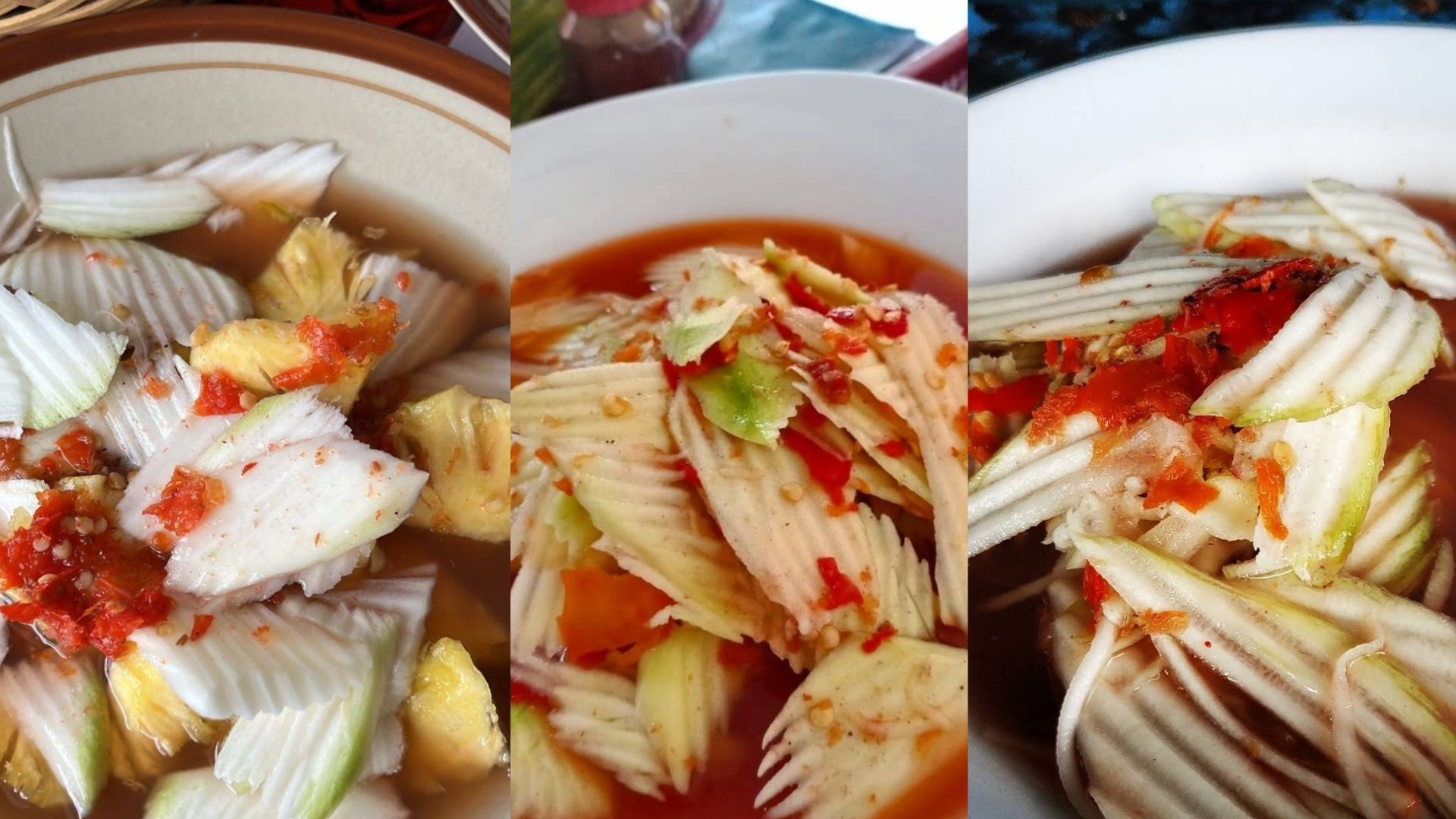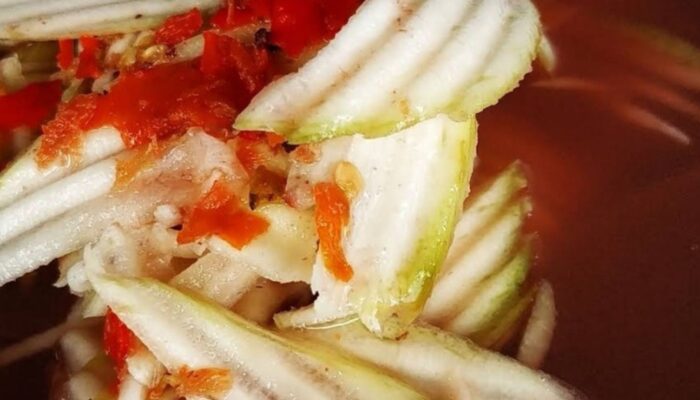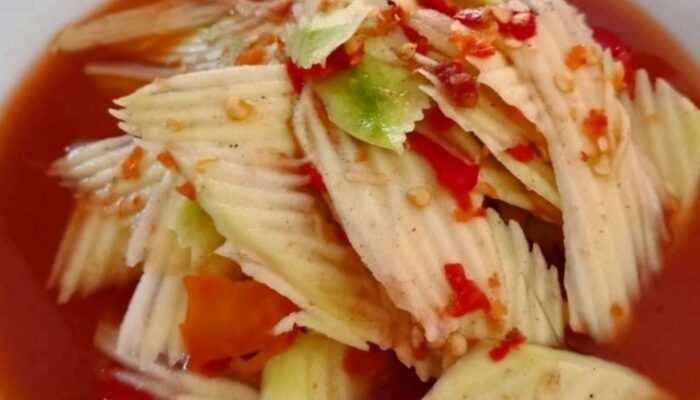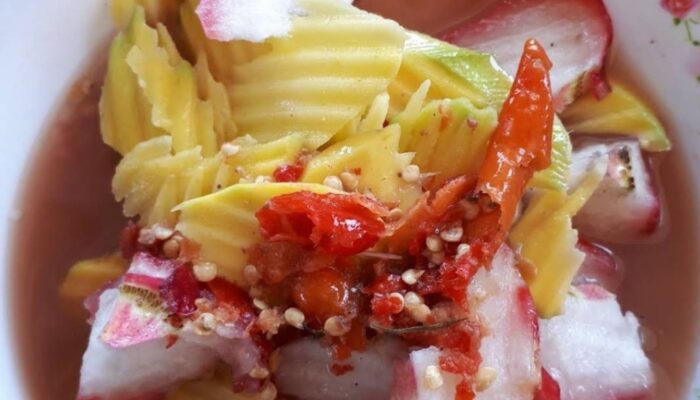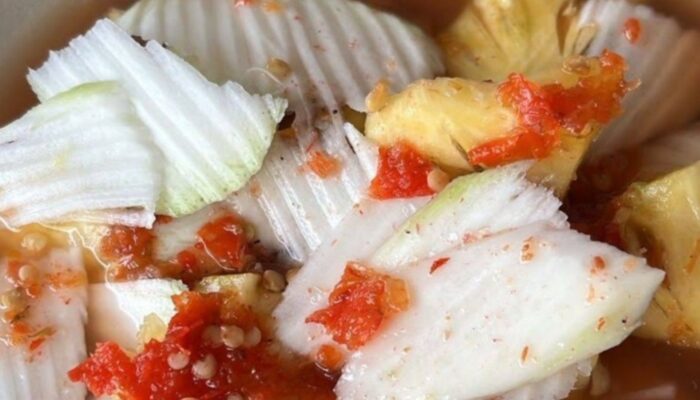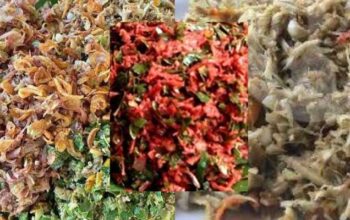Bali isn’t just about stunning beaches and breathtaking landscapes—it also boasts a treasure trove of unique local dishes that spark curiosity. One snack that’s recently been gaining popularity among both tourists and locals is rujak kuah pindang. Though it may look simple, the taste of this dish can easily win over anyone who tries it.
What is Rujak Kuah Pindang?
In general, rujak refers to a fruit salad drenched in spicy sauce. But rujak kuah pindang, a Balinese specialty, is unlike any typical rujak. Instead of using the usual sweet palm sugar and peanut dressing, this version is served with a savory broth made from pindang (boiled fish), giving it an unmistakably unique flavor.
The broth is typically made by simmering small fish like tuna or mackerel, then adding shrimp paste (terasi), bird’s eye chili, a pinch of salt, and sometimes a splash of lime juice. The result? A bold blend of spicy, salty, tangy, and umami flavors that you won’t find in any other rujak outside of Bali.
The Origins of Rujak Kuah Pindang
This dish was born from the traditional Balinese kitchen, where people creatively transform humble ingredients into flavorful meals. In the past, pindang—commonly used as an everyday side dish—was boiled with basic seasonings like salt, chili, and shrimp paste to make a simple broth.
Eventually, this broth wasn’t just used for vegetables or side dishes, but also poured over fresh fruits, especially sour ones like unripe mango and kedondong (ambarella). Over time, this evolved into a signature dish known as rujak kuah pindang.
It was traditionally served in Balinese households during fruit season or family gatherings. Thanks to its easy-to-find ingredients and bold flavors, the dish spread across Bali and became a beloved snack enjoyed by locals and tourists alike.
Despite its simplicity, rujak kuah pindang reflects a deep culinary philosophy: blending the elements of sea (fish), land (fruit), and fire (chili) into one harmonious bite.
The Fruits That Make You Crave More
This rujak typically features crisp, tangy fruits that complement the savory broth. Some of the most common fruits used include:
- Unripe mango – sour and refreshing, perfectly paired with the savory broth
- Rose apple (water apple) – sweet and juicy
- Ambarella (kedondong) – slightly astringent, adds a crunchy texture
- Cucumber – adds a cooling, light element
- Pineapple – sweet and tangy, pairs well with the spicy sauce
Sometimes, jicama or local apples are added depending on availability and personal preference.
A Flavor Explosion You Have to Taste to Understand
What makes rujak kuah pindang so special is the explosion of contrasting flavors. There’s the fiery heat from the chili, umami from the shrimp paste and fish broth, the freshness of the fruit, and a hint of ocean aroma from the broth. It’s not your usual rujak, and that’s exactly what keeps people coming back.
If you’re a fan of spicy food, this snack will hit the spot. Many vendors even offer different spice levels, so you can choose from mild to fiery hot that’ll make you sweat—in the best way possible.
Best Enjoyed on Hot Afternoons
Rujak kuah pindang is best enjoyed in warm weather. The combo of fresh fruit and savory broth is both cooling and energizing thanks to the kick of chili. Many locals enjoy it in the afternoon as a snack, a chat companion, or a refreshing bite after swimming or strolling around.
If it’s your first time in Bali, this dish should be on your must-try list—not just for the flavor, but for the unique culinary experience.
Where to Find Rujak Kuah Pindang?
If you’re in Bali and want to give it a try, rujak kuah pindang is quite easy to find. Here are some popular spots:
- Denpasar – Plenty of street vendors and small eateries, especially around markets and residential areas
- Sanur and Renon – Trendy spots offer both rujak kuah pindang and rujak bulung (made with seaweed)
- Ubud and Gianyar – Some small cafés and local eateries now serve this dish with a modern twist
You can also find vendors on social media or food delivery apps—perfect if you want to enjoy it in your villa or hotel.
Final Thoughts
Rujak kuah pindang may sound unfamiliar at first, but after just one bite, you’ll likely find yourself wanting more. It’s a dish that showcases the bold and adventurous Balinese flavor palette—a blend of salty, spicy, umami, and fresh in every bite.
If you love rujak, spicy food, or exploring unique regional dishes, don’t leave Bali without trying this one. It’s not just refreshing—it leaves a lasting impression. But be warned: once you fall in love with it, it’s hard to move on!
